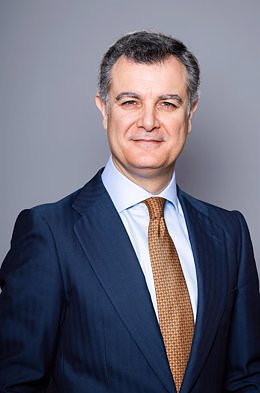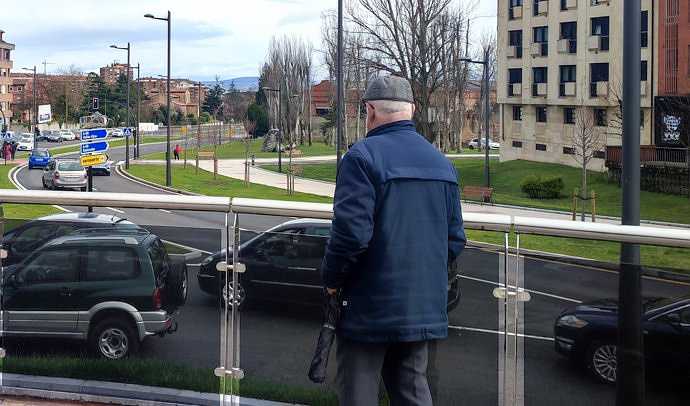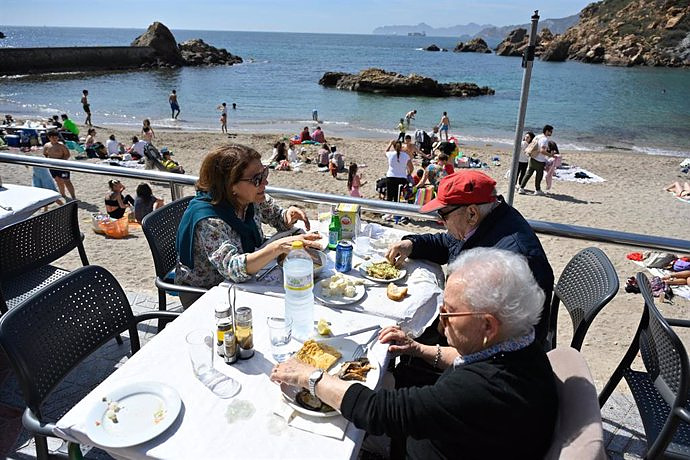Can run out of money at the same time and rest? In the circulation, and be saved? Without much questioning, we call often the two main functions of money in a sentence: Bitcoin is about to serve as a store of Value and means of payment. However, these two properties together in the first place? There is a century-old movement that claims that individual functions must be separated. Accompany us on a journey through the history of economic doctrine from the middle ages up to the regional currency "Chiemgauer" and learns in a slightly different way of looking at money.
It began in the middle ages. But the dark, with the 15 is not meant to be. Century onset of the epoch of the oppression of peasants, the plague, and the witch burning. In the less well-known time of the high middle ages from about 1150 to 1450, reigned in Central Europe according to various authors, such as Klaus Schäfer, for "wide layers of the population no Distress. In some civil segments of the state became even.“
The economic flowering in the high middle agesIt was built in the time of culture, and cities-UPS. You built cathedrals like Notre Dame in Paris, St. Stephen's Cathedral in Vienna, or the well-known Dombauten in Frankfurt and Regensburg – to name just a few examples. The architecture of the Gothic style emerged and about 60 cities were founded in Germany in the present. The Hanseatic League flourished, and apparently the little man benefited from the prosperity, the spread. Then cities took only a few Thousand inhabitants, what is the erection of the mighty cathedrals and magnificent buildings all the more remarkable. There is no slave did not exist armies, apparently, the people worked themselves to death. More than 90 religious holidays in the year, a working day of six hours and the "blue Monday", which was in many areas of work, testify to this.
Charles Walker device in his classic "The money is in the history" of this era, literally in swarms, and writes:
"Never before and never after a business has occurred flowering of the same resistance."
But like this for a long time is to be explained without the economic crisis? Here there are some models, the grip is certainly into each other. Some argue with the newly founded Hanseatic League, which promoted overseas trade, others see the political stability or the Christian values in the foreground. The next in turn, the phenomenon explain the former coinage.
The first money Circulation: The bracteatesIn the case of the former coins, the bracteates, it came every few months to the so-called "Renovatio Monetarum". In this case, the country moved in the Prince of all the coins and issued new. This he exchanged, however, in a worse ratio. For ten-replaced coins, the citizens got back only about eight coins. Save made no sense, because you knew you would lose in a few months, a part of his Savings.
Thus, the money remained continuously in circulation, it was invested and the economy was buzzing. The money was less of a store of Value than a medium of exchange. The bracteates ended by various external events, among other things, with the ever increasing popularity of the "Eternal Pfennig", which was in his stable. The double function as a store of Value and as a medium of exchange was given.
In this double function, however, the economy saw scientists of the late 19th century. Century, Silvio Gesell, the source of all Evil in the money economy.
Of Silvio Gesell about the "Wörgl" to the "Chiemgau"Silvio Gesell 1903:
"The money is used today as a savings and medium of exchange, so two completely different, speak often intersecting and conflicting purposes. [...] The money should run at the same time and rest, sleep and work. (..) From this double use, these antagonistic purposes arise all the errors of the today's monetary system. All the contradictions, riddles, and ambiguities find their explanation in this unnatural Association of exchange and medium of Saving. This double nature of today's money, exclusive of the debt, why the currency matters very complicated.“
Silvio Gesell tried in the 19th century. Century at the time of the high middle ages. He shaped an entire economic theory called "free Economics" from his findings. This handle in subsequent decades. So the crisis of the 1930s, introduced during the economy of an Austrian town called Wörgl with a regional money, the lost time value and, therefore, to Spend inviting.
With success, because of the "Wörgl", such as the loss of money was called, brought in the midst of a time of crisis, a huge upswing in the Region. In Germany, there was, under the name of "Wära-exchange society" a similar Experiment. Both projects finished by the respective government, ultimately, in spite of – or because of – their success. In particular, in Wörgl it was not without resistance and the small town gave their new currency until the invasion of the country's own army threatened to.
Also today, the theory of free Economics is still alive and shows itself in Germany in many of the regional movements of money. The largest and best known among them is certainly the Chiemgau. With the regional money around the Chiemsee today can be according to their own information at over 500 companies paid. The Chiemgau is the basic principle of a copy of Wörgl and loses on a monthly basis.
Bitcoin vs. Chiemgau: What is the better money?try Both of these projects, to be better money than Fiat money. Nevertheless, they could hardly be more different.
the Increasing value vs. decreasing value ofThe first difference is the most obvious: While the Bitcoin is due to its artificial limit at 21 million units tend to be more valuable and, therefore, a particularly strong memory, tries in the Chiemgau to have the opposite effect. Because of the artificial value of the loss, he is forcing the user to spend. To save Chiemgau would be pointless, Bitcoin to "hodln" is very popular. For a pure medium of exchange, this feature of the Chiemgauers is better, it's the question of the acceptance of such a currency. This, in turn, leads to the question of the centralization of money.
centralization vs. decentralizationAlready in the high middle ages, brakteat needed a country gentlemen for their enforcement. Centralisation seems to be for the acceptance and organization of such a project is of advantage, if not to be even necessary. Bitcoin excludes Central instances and focuses on decentralization. Through its potential to increase in value he needs keine Central Institution, in order to find acceptance. People use it to profit maximization.
regionalism vs. GlobalismThe Chiemgau is trying to strengthen the Region. Outside the area around the lake Chiemsee, no one can pay with the Regio of money. This is to prevent, among other things, the Migration of capital. The Bitcoin is doing the exact opposite: It makes no difference whether someone sends money to China or to the neighbors. The transaction cost and the transaction period will remain the same. Bitcoin transcends borders between countries, brings together the world closer, while the Chiemgau strengthens the Region. In times of economic crisis could be through Bitcoin its Portfolio to hedge, while a regional currency trying to save the economic core of a Region. Both perspectives are understandable, but could hardly be more different.
What is better? An Apple or a pear?Ultimately, both projects have advantages and disadvantages. You seem to focus on different aspects of money and that is exactly what makes the comparison so interesting is that, While Bitcoin has better overall properties as a store of Value, seems to be in the Chiemgau to focus more on the exchange function of money. At least, it seems worthwhile to keep the free economic perspective in mind when we speak of money as a store of Value and medium of exchange at the same time. And who knows, maybe need to make pears and Apples Yes no competition, but can co-exist.

 Exploring Cardano: Inner Workings and Advantages of this Cryptocurrency
Exploring Cardano: Inner Workings and Advantages of this Cryptocurrency Seville.- Economy.- Innova.- STSA inaugurates its new painting and sealing hangar in San Pablo, for 18 million
Seville.- Economy.- Innova.- STSA inaugurates its new painting and sealing hangar in San Pablo, for 18 million Innova.- More than 300 volunteers join the Andalucía Compromiso Digital network in one month to facilitate access to ICT
Innova.- More than 300 volunteers join the Andalucía Compromiso Digital network in one month to facilitate access to ICT Innova.-AMP.- Ayesa acquires 51% of Sadiel, which will create new technological engineering products and expand markets
Innova.-AMP.- Ayesa acquires 51% of Sadiel, which will create new technological engineering products and expand markets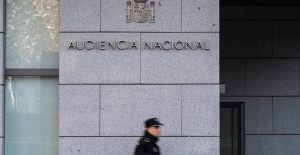 The Prosecutor's Office requests that the AN investigate the detainee for terrorism for damaging an ax in a McDonalds in Badalona
The Prosecutor's Office requests that the AN investigate the detainee for terrorism for damaging an ax in a McDonalds in Badalona Balearic PSOE denounces the director of IbSalut for prevarication for renouncing the mask claim file
Balearic PSOE denounces the director of IbSalut for prevarication for renouncing the mask claim file Otxandiano reproaches that PSOE "has lent itself" to taking out ETA in the campaign, like the extreme right against Sánchez
Otxandiano reproaches that PSOE "has lent itself" to taking out ETA in the campaign, like the extreme right against Sánchez Puigdemont claims to have a "well grasp" of the State and asks to "be respected" to obtain more transfers
Puigdemont claims to have a "well grasp" of the State and asks to "be respected" to obtain more transfers How Blockchain in being used to shape the future
How Blockchain in being used to shape the future Not just BTC and ETH: Here Are Some More Interesting Coins Worth Focusing on
Not just BTC and ETH: Here Are Some More Interesting Coins Worth Focusing on Valencia displays its "innovative and technological potential" at the Emerge Americas event in Miami
Valencia displays its "innovative and technological potential" at the Emerge Americas event in Miami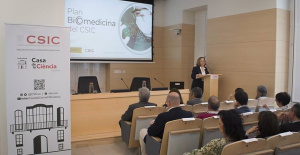 The CSIC incorporates the challenges of robotics, nanotechnology and AI in the new strategic plan for biomedicine
The CSIC incorporates the challenges of robotics, nanotechnology and AI in the new strategic plan for biomedicine Innovation allocates 9.1 million to train 74,000 people and guarantee digital inclusion
Innovation allocates 9.1 million to train 74,000 people and guarantee digital inclusion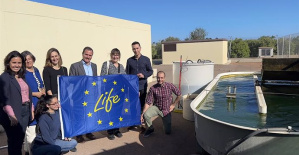 LIFE SPOT manages to develop new green treatments that eliminate groundwater contamination
LIFE SPOT manages to develop new green treatments that eliminate groundwater contamination A million people demonstrate in France against Macron's pension reform
A million people demonstrate in France against Macron's pension reform Russia launches several missiles against "critical infrastructure" in the city of Zaporizhia
Russia launches several missiles against "critical infrastructure" in the city of Zaporizhia A "procession" remembers the dead of the Calabria shipwreck as bodies continue to wash up on the shore
A "procession" remembers the dead of the Calabria shipwreck as bodies continue to wash up on the shore Prison sentences handed down for three prominent Hong Kong pro-democracy activists
Prison sentences handed down for three prominent Hong Kong pro-democracy activists ETH continues to leave trading platforms, Ethereum balance on exchanges lowest in 3 years
ETH continues to leave trading platforms, Ethereum balance on exchanges lowest in 3 years Investors invest $450 million in Consensys, Ethereum incubator now valued at $7 billion
Investors invest $450 million in Consensys, Ethereum incubator now valued at $7 billion Alchemy Integrates Ethereum L2 Product Starknet to Enhance Web3 Scalability at a Price 100x Lower Than L1 Fees
Alchemy Integrates Ethereum L2 Product Starknet to Enhance Web3 Scalability at a Price 100x Lower Than L1 Fees Mining Report: Bitcoin's Electricity Consumption Declines by 25% in Q1 2022
Mining Report: Bitcoin's Electricity Consumption Declines by 25% in Q1 2022 Oil-to-Bitcoin Mining Firm Crusoe Energy Systems Raised $505 Million
Oil-to-Bitcoin Mining Firm Crusoe Energy Systems Raised $505 Million Microbt reveals the latest Bitcoin mining rigs -- Machines produce up to 126 TH/s with custom 5nm chip design
Microbt reveals the latest Bitcoin mining rigs -- Machines produce up to 126 TH/s with custom 5nm chip design Bitcoin's Mining Difficulty Hits a Lifetime High, With More Than 90% of BTC Supply Issued
Bitcoin's Mining Difficulty Hits a Lifetime High, With More Than 90% of BTC Supply Issued The Biggest Movers are Near, EOS, and RUNE during Friday's Selloff
The Biggest Movers are Near, EOS, and RUNE during Friday's Selloff Global Markets Spooked by a Hawkish Fed and Covid, Stocks and Crypto Gain After Musk Buys Twitter
Global Markets Spooked by a Hawkish Fed and Covid, Stocks and Crypto Gain After Musk Buys Twitter Bitso to offset carbon emissions from the Trading Platform's ERC20, ETH, and BTC Transactions
Bitso to offset carbon emissions from the Trading Platform's ERC20, ETH, and BTC Transactions Draftkings Announces 2022 College Hoops NFT Selection for March Madness
Draftkings Announces 2022 College Hoops NFT Selection for March Madness



